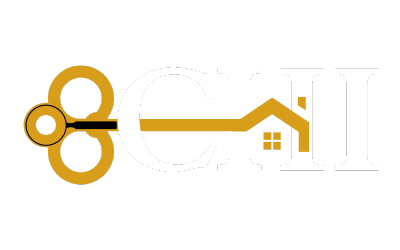Inspected Features
-
Infrared cameras are used to detect temperature variations, revealing hidden issues like water leaks, poor insulation, electrical problems, and HVAC inefficiencies. This non-invasive tool provides valuable insights to ensure a thorough assessment of a home's condition.
-
Main Panel: Checked for proper wiring, capacity, and circuit breaker functionality along with proper installation up to current safety standards.
Outlets and Switches: Tested for grounding and functionality, including GFCI outlets in wet areas.
Lighting and Wiring: Inspected for functionality and safety hazards, such as exposed or outdated wiring.
-
Attic: Assessed for adequate insulation, ventilation, and moisture control.
Crawl Spaces: Checked for proper insulation and ventilation to prevent mold and rot.
-
Furnace and Boiler: Inspected for age, condition, and maintenance.
Air Conditioning: Checked for proper cooling (Delta T), age, and condition.
Airhandler and Heat Pump: check coils for damage and debris and that the units are functioning.
-
Shingles/Material: Examined for wear, damage, or missing pieces.
Flashing and Seals: Checked for proper installation and waterproofing.
Gutters and Downspouts: Assessed for clogs, alignment, and adequate drainage away from the home.
Chimney: Inspected for cracks, damage, and proper insallation.
-
Kitchen Appliances: Ovens, stovetops, dishwashers, and refrigerators tested for functionality.
Laundry Machines: Inspected if included in the sale.
Exhaust Fans: Checked for proper operation in kitchens and bathrooms.
-
Grading and Drainage: Evaluated to ensure water flows away from the foundation.
Retaining Walls: Checked for stability and signs of movement.
Fencing: If and where attached to the dwelling, fencing is assessed for damage and secure installation.
-
Ensure cabinets and vanities are securely mounted, properly aligned, and free from damage like warping or loose hinges.
Check for signs of moisture issues, such as water stains or leaks, especially near sinks or plumbing fixtures.
-
Siding: Checked for damage, rot, or weathering.
Windows and Doors: Evaluated for damage, proper sealing, and functionality.
Decks, Patios, and Porches: Inspected for structural integrity, stability, and safety as well as proper installation and condition.
Driveway and Walkways: Examined for cracks, uneven surfaces, and potential trip hazards.
-
Walls and Ceilings: Checked for damage, cracks, water stains, and structural issues.
Floors: Inspected for unevenness, squeaks, or damage. Report on condition is included.
Stairs and Railings: Evaluated for safety and stability.
Windows and Doors: Checked for damage, proper operation, and locks.
-
Termites or other wood-destroying insects: assessment included evidence of current or previous activity.
Rodent or pest infestations: including, but not limited to wasps, bats, snakes, and mice.
-
Mold growth: Particularly in humid environments like Virginia, can be a concern for homeowners. Mold inspections are requested to identify mold or moisture issues, which can lead to health problems and property damage.
-
Pipes: Inspected for leaks, drainage, corrosion, and water pressure.
Fixtures: Checked for functionality and water flow.
Water Heater: Assessed for age, efficiency, and signs of rust or leaks.
-
Smoke and Carbon Monoxide Detectors: Verified for presence and functionality.
Fireplaces and Wood Stoves: Inspected for creosote buildup, damper function, and—if present—gas log functioning.
Staircase Safety: Ensured proper railing height and secure handrails.
-
Foundation: Inspected for cracks, settling, water intrusion, or shifting.
Framing: Evaluated for structural integrity, including walls, beams, and joists.
Basement and Crawlspace: Checked for moisture issues, ventilation, and insulation.















